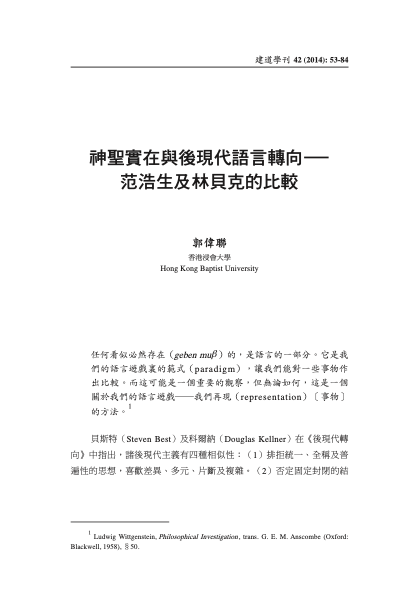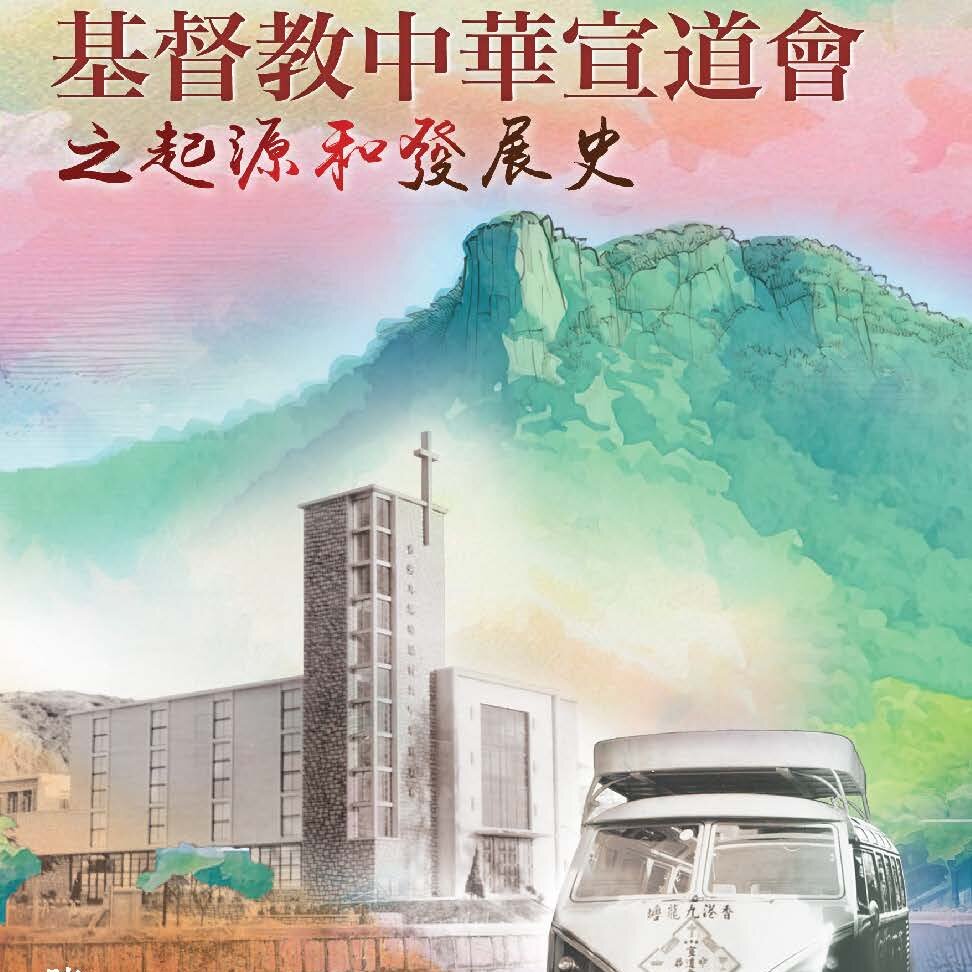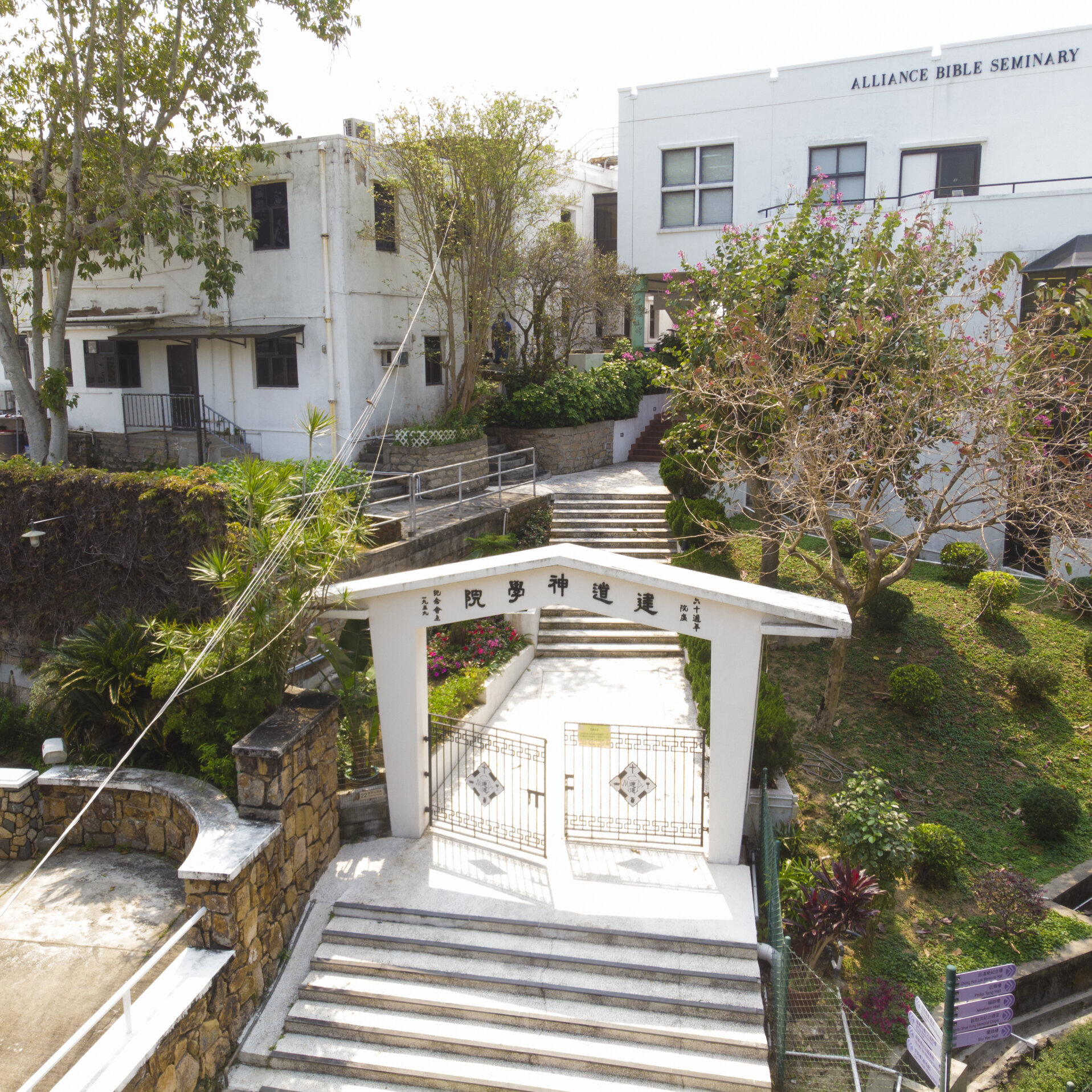神聖實在與後現代語言轉向——范浩生及林貝克的比較/郭偉聯
郭偉聯
撮要
後現代語言轉向令神學言說如何指涉神聖實在備受爭議。林貝克及其代表 的後自由主義神學,利用維根斯坦的哲學思辯來將神學言說安置在文化—羣體 之中,強調聖經敘事的重要性,並且以這兩點來賦予神學言說的合理性。但福 音派神學家范浩生卻認為林貝克及後自由主義神學有約減三一上帝的實在性的 危險,故提出他認為既能保持上帝的實在性,又注意後現代語言轉向的挑戰的 神學建議:正典—語言進路(canonical-linguistic approach)。他並提出以戲劇這隱喻及言說—行動理論(speech-act theory)來擴大聖經敘事的意涵,動態地表達人的信仰表述及三一上帝經世作為的神學及認知意義。本文指出,范浩生雖然強調他的神學乃批判林貝克的神學思想的弱點,但作者從他們受李克爾及弗萊的思想影響中,發現他們兩者有着相似性。筆者認為,范浩生用「正典— 語言」理論展示的三一實在,在不信的人及其他宗教的人眼中,與林貝克的 「文化—羣體」論述可能並無二致。
ABSTRACT
Postmodern linguistic turn doubts that how we can make a theological discourse that really refers to the divine reality. George Lindbeck and the post-liberal theology suggest that we may utilize Wittgenstein’s insight on language to construct a valid theological discourse through the reality of biblical narrative and linguistic community (i.e., Christian community). But, Kevin Vanhoozer worries the post-liberal move may reduce the Triune reality into a mere communal expression of experience. In return, he proposes a canonical-linguistic approach of doctrine for explicating the Triune communicative act. He believes that his proposal can correct Lindbeck’s deficiencies of fideism, idealism, and non-realism. But, after a close comparison of both theories in their using of typology, intratextuality, and the metaphor of map, this article argues that Vanhoozer’s proposal is very similar with Lindbeck’s. The article also find that if we compare Vanhoozer and Lindbeck through two theologians’ theological roots of Ricoeur and Frei, in their understanding of text, faith, and reality, we will be aware that Vanhoozer’s canonical-linguistic approach cannot advance Lindbeck much in terms of realism.
原載於《建道學刊》42期(2014年7月),頁 53-84。
Latest Articles
新手牧者研究計劃(三):新手牧者的身心靈狀態 / 盧慧儀
2025 年 11 月 19 日
個體與關係:滕近輝思想中「深化」的靈性觀 / 倪步曉
2025 年 11 月 18 日
香港九龍塘基督教中華宣道會之起源和發展史/陳智衡
2025 年 10 月 20 日
Highlights
[電子書]困境與抉擇:「建道研究中心30週年誌慶」跨學科研討會論文集/廖炳堂、倪步曉主編
2025 年 1 月 2 日
從梧州到長洲:建道神學院125年的挑戰與恩典 / 陳智衡
2023 年 10 月 1 日
微小教會的見證/高銘謙
2023 年 6 月 1 日







